In the previous post I have formed the general shape of the Dauntless wing. Now I will work on its trailing edge, separating the aileron and flaps. They were attached to the internal wing reinforcements. These reinforcements were distributed in parallel to the trailing edge:
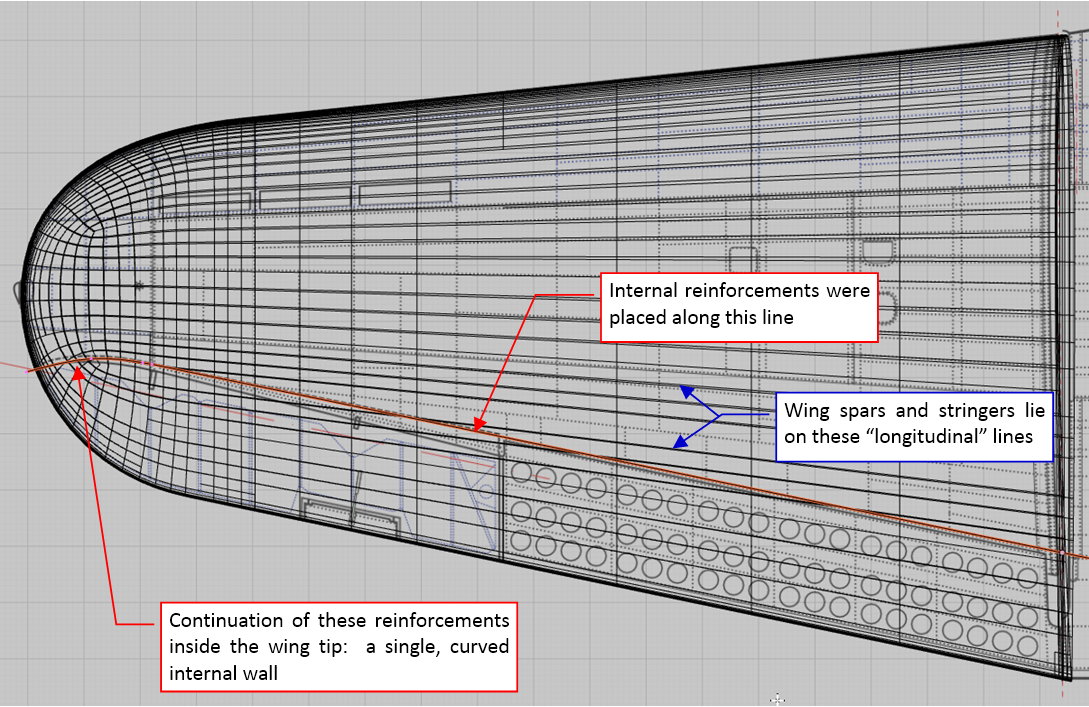
In the first step I will split the wing mesh along this line. However, before I do this, let me mention a certain geometrical effect which can be surprising for many modelers. (Frankly speaking: it was also surprising for me — I knew that such an effect exists, but I thought that its results can be neglected for this wing area).
When you place on the wing a plane shaped like the "cutting line" shown on the picture above (see below, left), you will discover that the resulting intersection edge on the wing surface forms a curved contour (see below, right):
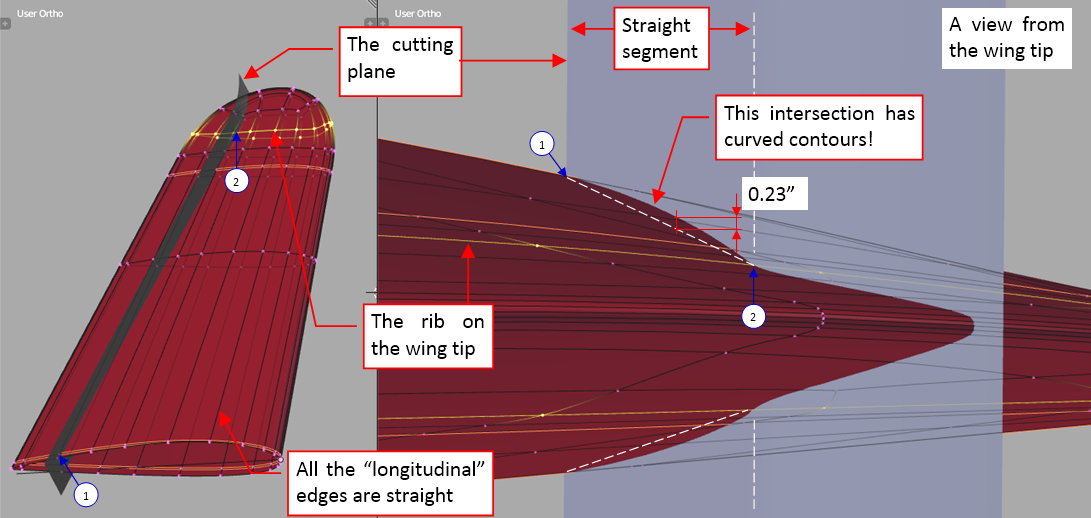
The curve on the wing tip is not a surprise, but why the intersection of the flat plane and the wing trapeze (i.e. the line between point 1 and 2) is also curved? The answer is: because this wing is like a section of an elliptic cone. The only straight line on the cone surface connects its base and apex. Any other direction (like our cutting plane) produces a curve. When the curvature of the wing airfoil on this area is low, the deviation from the straight line can be neglected. However, in this wing it produces a 0.23” deviation at the aileron root rib. You had to adapt contours of the spars and stringers used there.
Obtaining such a gently curved shape on a relatively long element is difficult from the technological point of view (i.e. costly). It can be applied if the high performance is on the stake (as in the Spitfire case). However, even the Spitfire designers had to make a compromise with the workshop and made the bottom of their wing flat. (In this way they provided a technological base).
What could do a pragmatic Northrop (then Douglas) designer in such a case? I have no direct photographic proof, but it seems that they approximated this shape with two straight segments. They are split at the aileron root section:
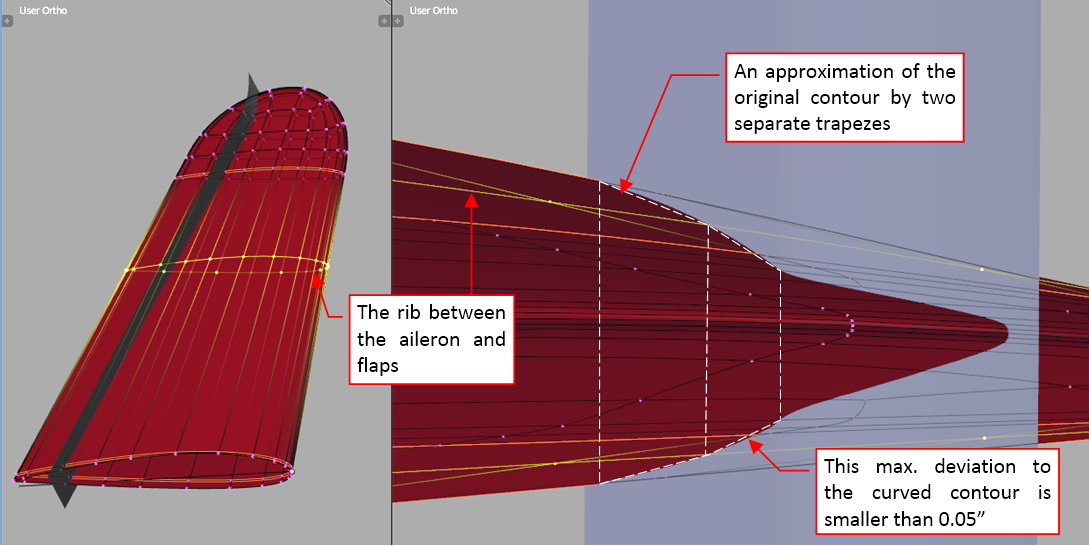
In the next post I will show you that in this wing each of these two segments was made in a different way. The flaps were attached to a reinforced vertical wall (a kind of a partial spar), while in the front of the aileron there was a lighter structure matching the shape of the aileron leading edge.
After these deliberations we can cut off the trailing edge from the win:
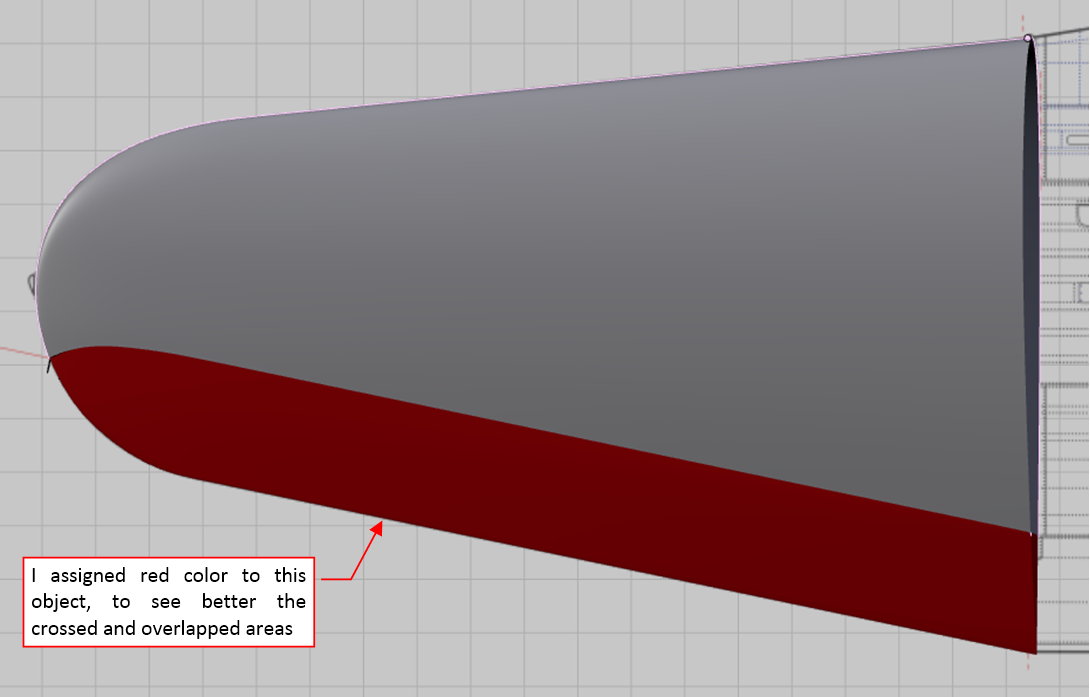
(I did it in two steps. In the first step I created a new edge along the intended split line, using the Knife tool. In the next step I separated the rear part of this mesh into a new object).
We will deal with the red elements in the next post. In this post let’s recreate wing details along the flaps and aileron bay:
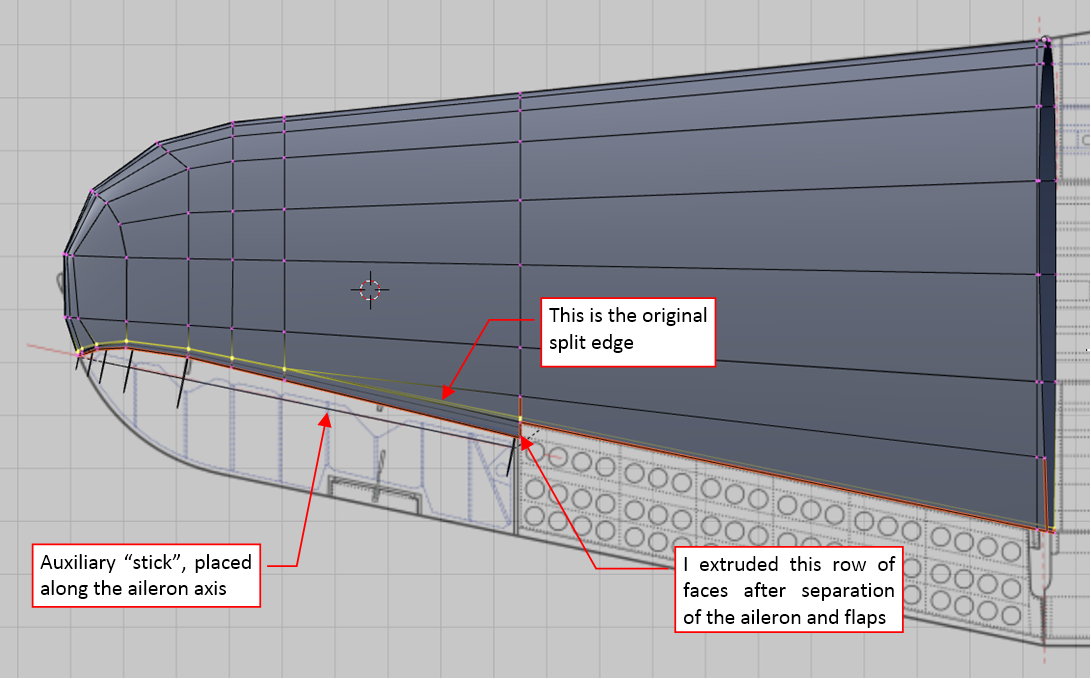
The ultimate edges of aileron bay are located a little bit further than the “reinforcement line”. I extruded them from the original mesh.
When a part of the original control mesh is removed, the shape of the resulting object can have small deviations from the original shape of the complete wing. Thus before I separated the trailing edge I copied the complete wing into an auxiliary, “reference” object. Now I am using it to ensure that all these newly extruded vertices lie on the appropriate height:
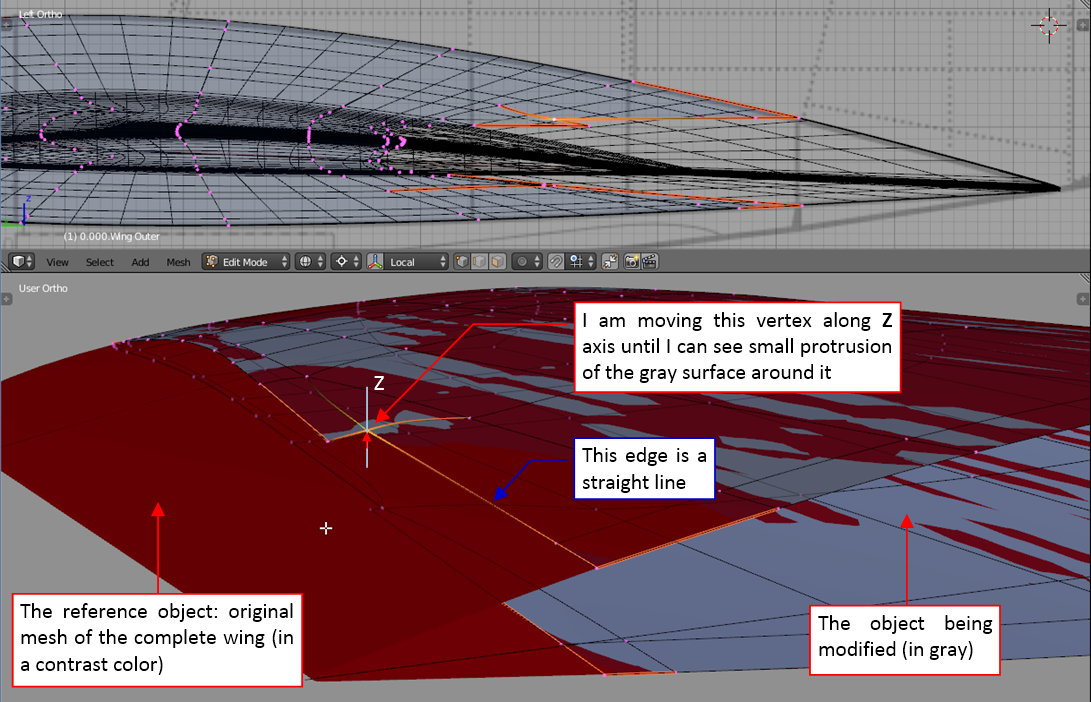
On the picture above you can see solid red areas around the modified vertex. This is the result of the approximation of the curve section (the flap hinges have to be straight lines).
To determine exact shape of the aileron bay edges I placed an auxiliary “stick” along the aileron axis, as well as some circles around it. The radii of these circles match the shape of the aileron leading edge (+ the width of the eventual gap — see picture below, bottom left). Then I set the view perpendicularly to this aileron axis object, and used auxiliary circles to determine the shape of the aileron bay edge:
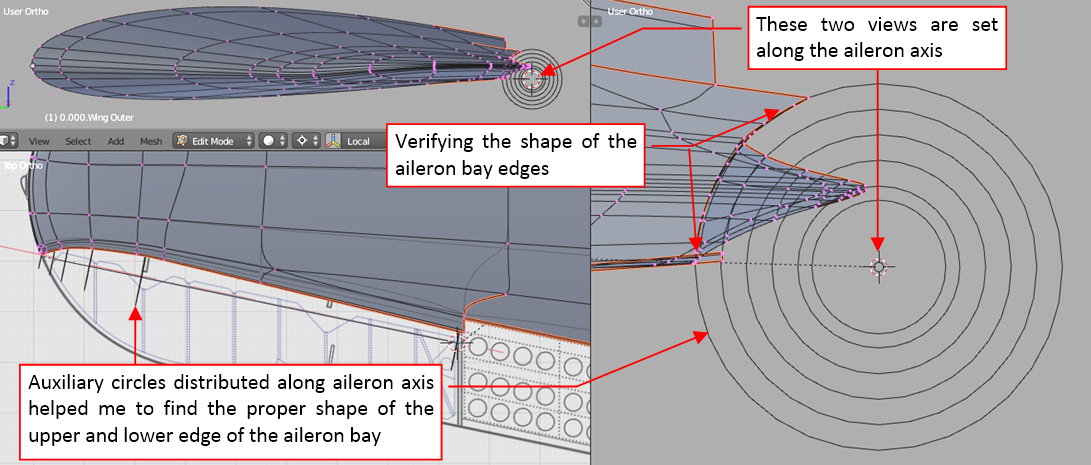
Finally I closed the aileron bay with a curved wall that matches the shape of aileron leading edge:
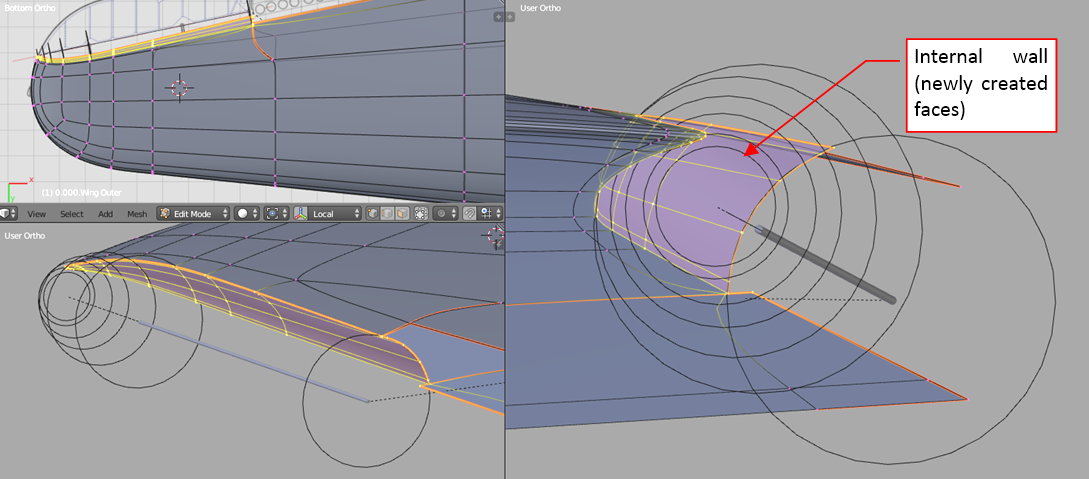
In this source *.blend file you can check all details of the mesh presented in this post. The next post will report further progress on the wing trailing edge details (I will form and fit the aileron).